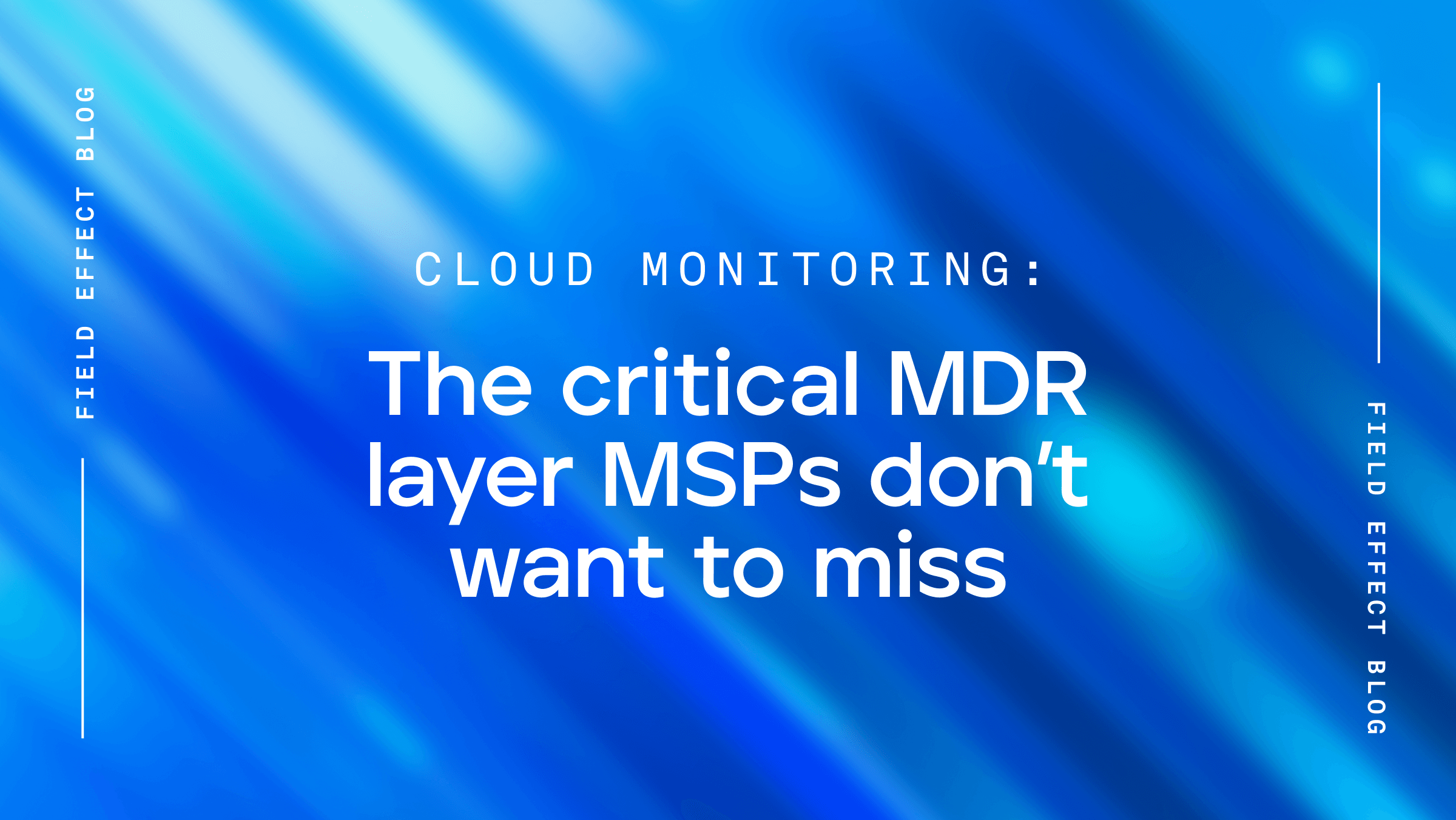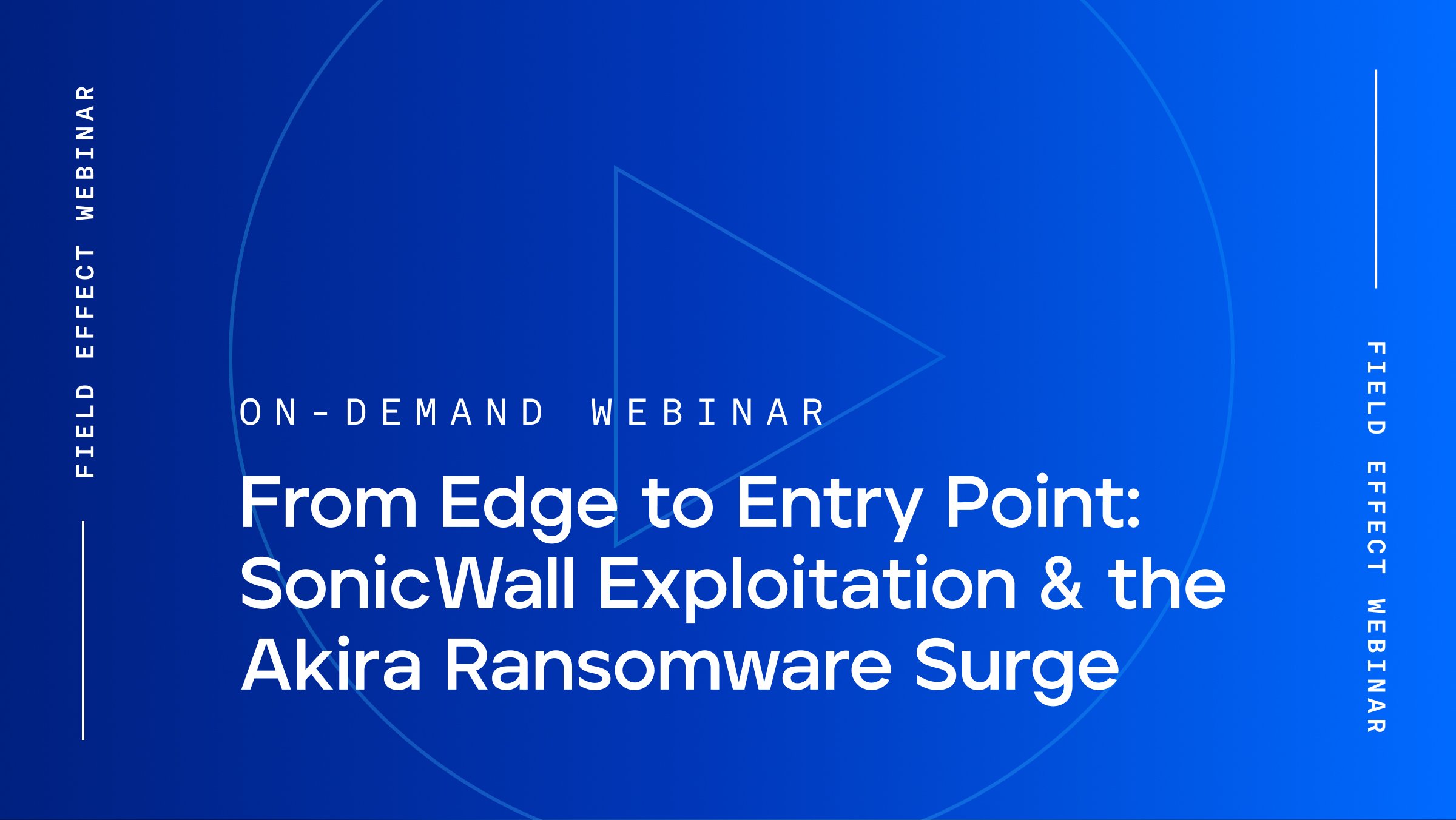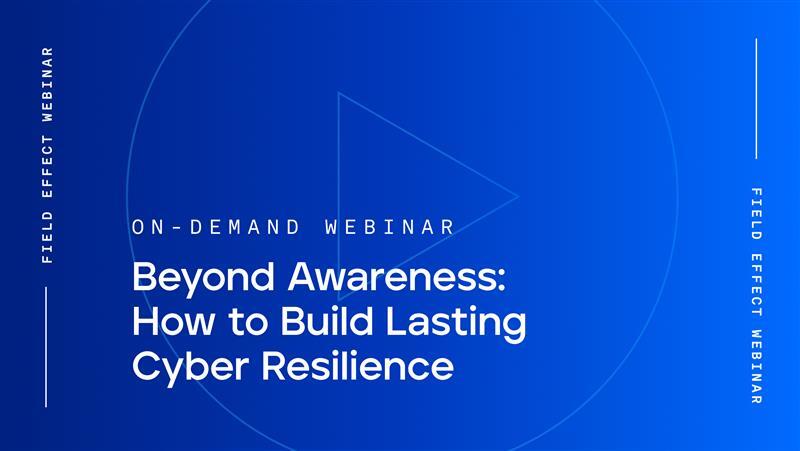
Blog Post
January 19, 2024 | Cybersecurity education
By Field Effect
Time and time again, studies show that small companies are often more frequent targets of cybercrimes than large enterprises, despite the popular belief that smaller businesses can successfully fly under the radar.
Keeping in mind that the average cyberattack now costs companies $4.45 million—improving your defenses could be a great financial decision as well.
But when it comes to putting strong cybersecurity in place, even large companies can struggle to know where to begin.
The good news is by following a few cybersecurity best practices, you can build resiliency in your business while reducing your risk of experiencing a costly cyberattack.
This guide is here to remind you of 10 cybersecurity best practices that will ensure a more secure 2024 (and beyond).
Your company’s cybersecurity strategy should always reflect its unique risks, but there are also more general best practices all businesses would benefit from following. Here's what they are.
As any good cybersecurity expert will suggest, passwords are a good place to begin working on your company’s security strategy. As much as we’d like to be original, that really is the best place to start.
Many employees use simple passwords because they’re easy to remember, but that also makes them easy for hackers to guess.
Recent research shows that 81% of breaches at companies involve stolen passwords. If you can make everyone’s password harder to guess (and therefore steal) you’ll already be well on your way to reducing your company’s cybersecurity risk.
Strong passwords are long and complex, featuring letters, numbers, and special characters. But complex passwords are harder to remember, which is when a password manager truly proves its worth.
Password managers store all of an employee’s passwords securely in a single vault. This can make it much easier for employees to use strong passwords without negatively impacting your company’s security.
Consider requiring the use of multifactor authentication, a method of account authentication that requires the user to input a special code after the correct password.
Depending on the account, your employees may generate this one-time code via automated text messages, authentication apps, or even biometrics like face ID or a fingerprint scanner—with the latter two options being the most secure of the three.
Some research suggests that using MFA can stop over 99% of account compromise attacks. When MFA is active, a hacker can have all of a user’s login information and still not get into the account unless they can also obtain that one-time code.
Take it a step further by reminding employees not to give their MFA codes to anyone who may ask for them, even if the request comes from a trusted email address. There’s no guarantee that the person making the request is the actual account owner, and MFA fatigue attacks are becoming increasingly common.
Hackers constantly look for ways to penetrate networks, software, and data streams. When they’re successful, developers will then send out an update called a “patch” to fix the vulnerability exploited by the hackers so they can't use it again.
Unfortunately, many of us don’t update our software regularly. We wait until we absolutely must or until the right moment arrives (if ever). This means some of your employees may be using outdated software with known exploits, which is problematic since roughly one in every three successful cyberattacks is the result of unpatched software.
Make sure your team is patching software regularly. If possible, recommend turning on auto-update functionality so they don’t have to worry about downloading every patch manually.
All of our cybersecurity tips so far have focused on helping your business proactively prevent cyberattacks. But there are also steps you can take to lessen the operational impact of an attack that slipped through. Backing up your most important data can help your team get back to work faster and avoid the cost of a ransom payment.
Done properly, data backups will help you regain access to critical data or files, even if a hacker manages to lock you out of the system entirely.
For example, say a hacker infects your CRM with ransomware, restricting access to the platform until you pay the ransom amount. With a recent backup of the CRM’s data, your team could continue working and you wouldn’t feel as inclined to pay the hacker.
The new year is a great opportunity to reevaluate your cybersecurity posture from the top down. As part of that process, you may want to consider working toward a zero-trust model of security.
In traditional IT networks, devices and users that are already within networks are trusted completely. A zero-trust model doesn't trust any users or devices, even if they’ve accessed the network before.
Zero-trust security models can be quite effective at protecting against both insider attacks and external ones. The models tend to emphasize the principle of least privilege, which means giving users access to only the software and networks they need to do their jobs effectively.
More than ever, organizations are giving employees the option to work remotely—at least some of the time. If you do the same, your security strategy should ensure these employees can access corporate systems securely.
A major part of that is providing remote workers with a reliable VPN they can use to access their accounts outside of the office. VPNs mask a user’s identity and digital information, making it harder for hackers to breach their private accounts.
VPNs are especially important for employees who regularly connect to public Wi-Fi networks, as some research suggests that 43% of people have had their online security compromised while using public Wi-Fi.
When many of us think of cybercrime, we imagine an unknown figure leveraging technical know-how to breach our accounts from afar. But cyberattacks can also have a physical element.
For example, a hacker doesn't necessarily need to breach an online account if they can get into your server room. Some cybercriminals may even target employees’ phones and laptops. If they can steal one of these, they may be able to get into your systems relatively undetected (particularly if the incident is not reported to your IT or cybersecurity team quickly).
That’s why our next tip is to make sure you have a plan to guard against physical threats in 2024. This could look like a physical security policy that includes clauses like locking your laptop when you step away (even in the office), never leaving devices unattended in public, and restricting access to secure office areas.
It may sound obvious, but using the right security software is a critical part of any company’s cybersecurity strategy. However, only 49% of U.S. businesses currently use antivirus software.
If you haven’t reviewed your company’s security software recently, consider doing it in 2024. Ask yourself if you have enough protection to cover your entire threat surface. That means using more than just antivirus software.
For example:
Your company may or may not need all of this functionality. It depends on the hardware and software you use, the data you store, and whether you need to follow any digital privacy legislation (like the General Data Protection Regulation).
Either way, it's best to look for a comprehensive cybersecurity solution that offers most, if not all, of the above functionality.
Building strong internal security systems and asking your employees to implement your cybersecurity best practices can greatly minimize your company’s risk. But that’s not the end of a comprehensive cybersecurity strategy.
You may still have a lingering area of risk if you’ve given third-party suppliers and vendors access to your secured networks or sensitive data. A hacker may be able to breach these by compromising the vendor’s credentials instead of an employee’s.
That’s why it’s important to talk to your third-party partners about their approaches to cybersecurity. Ideally, you want to work exclusively with vendors who take cybersecurity as seriously as you do. That's easier said than done, of course, but will help ensure that your internal systems are as safe as can be.
Cybersecurity can be a lot of work. It can take many steps, various software, and thorough expertise to create a comprehensive cybersecurity strategy that protects your business.
An easier solution for many businesses is to partner with a company that offers managed detection and response (MDR). A good MDR combines technology and people to monitor your network, issue alerts, and resolve incidents.
The upshot is your company is protected from cybercrime damages without having to manage it all internally. That can open up a ton of time in your schedule to focus on the other important parts of your job, and help you avoid the challenge of finding, hiring, and retaining a cybersecurity team or professional.
If you’re interested in an MDR, just be sure to choose one with comprehensive protection. The right MDR won’t just act as a glorified antivirus, it will offer full protection for your company’s endpoints, cloud services, and networks.
That's exactly what Field Effect offers with Covalence. It's an advanced cybersecurity solution, managed by a team of cybersecurity experts who know the landscape best.
Every successful cybersecurity strategy relies on following best practices like the ones covered above. But that shouldn’t be where your cybersecurity journey ends.
The more you learn, the better you can protect your company from the myriad of potential threats. A good resource for further reading is our free Employee Cybersecurity Handbook. It takes a closer look at cybersecurity best practices in the modern workplace and includes other tips and information you can use to strengthen your company’s defenses in 2024.
So why wait? Download the eBook today to learn more.


